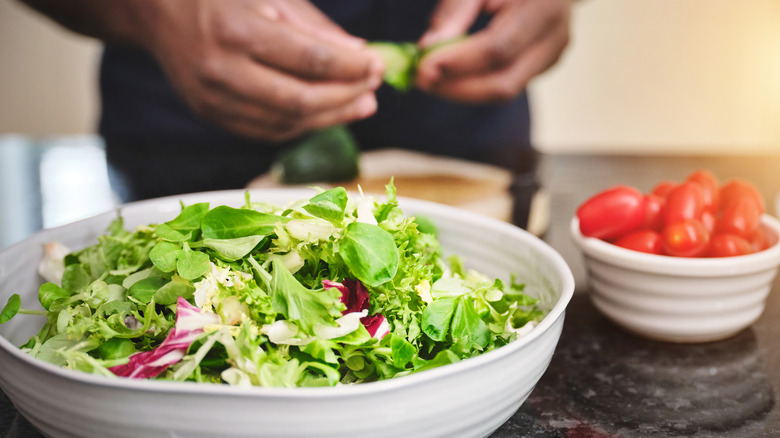Have you noticed there always seems to be at least one slimy piece in a bag of salad greens. We know the struggle. Dr Direct 4U associates naturally want the freshest groceries, but bringing home a bag of spring mix only to find it half-spoiled is a no starter for salad prep. The packaging engineers at MSU (Michigan State University)invented the modern packaging systems to keep all bagged vegetables shelf life stable.
When salad greens start to decompose, they emit carbon dioxide, which causes the bag to puff up. Depending on the bag's material, this isn't a guaranteed indicator, but looking for flatter packaging is always a good idea.
Non-bagged greens tend to last longer, which can be a solid way to enjoy more radicchio, kale, endive, and cabbage.
Greens, Packaging Always Check Bottom Of The Package
- Recipies
- 24 Nov, 2023
When Buying Bagged Greens, Pay Attention To The Bottom Of The Package.
The attached blog has been edited by, Vivienne, Dr Direct Food Consultant, from:https://www.tastingtable.com/1451249/bagged-lettuce-notice-bottom-package/
Have you noticed there always seems to be at least one slimy piece in a bag of salad greens. We know the struggle. Dr Direct 4U associates naturally want the freshest groceries, but bringing home a bag of spring mix only to find it half-spoiled is a no starter for salad prep. The packaging engineer at MSU (Michigan State University)invented the modern packaging systems to keep all bagged vegetables shelf life stable.
At the grocery store, always pick up that bag of greens and inspect it from every angle. If those delicate baby spinach leaves have wilted or gone slimy, chances are the denser, heavier leaves will slide to the bottom of the bag. Either way, if you notice any off-colored, visibly wet greens, then pick a different bag. Another visual cue to keep an eye out for is bag inflation. When salad greens start to decompose, they emit carbon dioxide, which causes the bag to puff up. Depending on the bag's material, this isn't a guaranteed indicator, but looking for flatter packaging is always a good idea.
Not sure? Open up your bagged greens when you get home and take a deep whiff. If it smells off, it has probably spoiled. As a rule, less sturdy varieties, like arugula and baby spinach, tend to go bad faster. By day five, these greens have likely reached their threshold. Non-bagged greens tend to last longer, which can be a solid way to enjoy more radicchio, kale, endive, and cabbage.
Get the most out of your produce
While these visual cues are super helpful, sometimes you get a batch that leans more toward slimy than crispy. Is it still safe to eat?
Your bagged leafy greens become slimy due to natural decomposition. Salad greens also get exposed to bacteria through numerous natural outlets, which multiply and grow on the wet leaves, changing the physical structure of the vegetable and facilitating faster breakdown. Luckily, these bacteria are natural and unlikely to make you sick. (The exception is pathogens, which lead certain products to become the center of public recalls.) Generally speaking, you can pick around the slimy pieces and toss the wetter greens out. Hooray for avoiding food waste and saving money!
Best advise is to return the package to the retailer for a full refund.
These statements have not been evaluated by the Food and Drug Administration. This product is not intended to diagnose, treat, cure, or prevent any disease
With Love and Infinite Wisdom, Vivienne: Savourer bon amii.
Read More: https://www.tastingtable.com/1451249/bagged-lettuce-notice-bottom-package/













